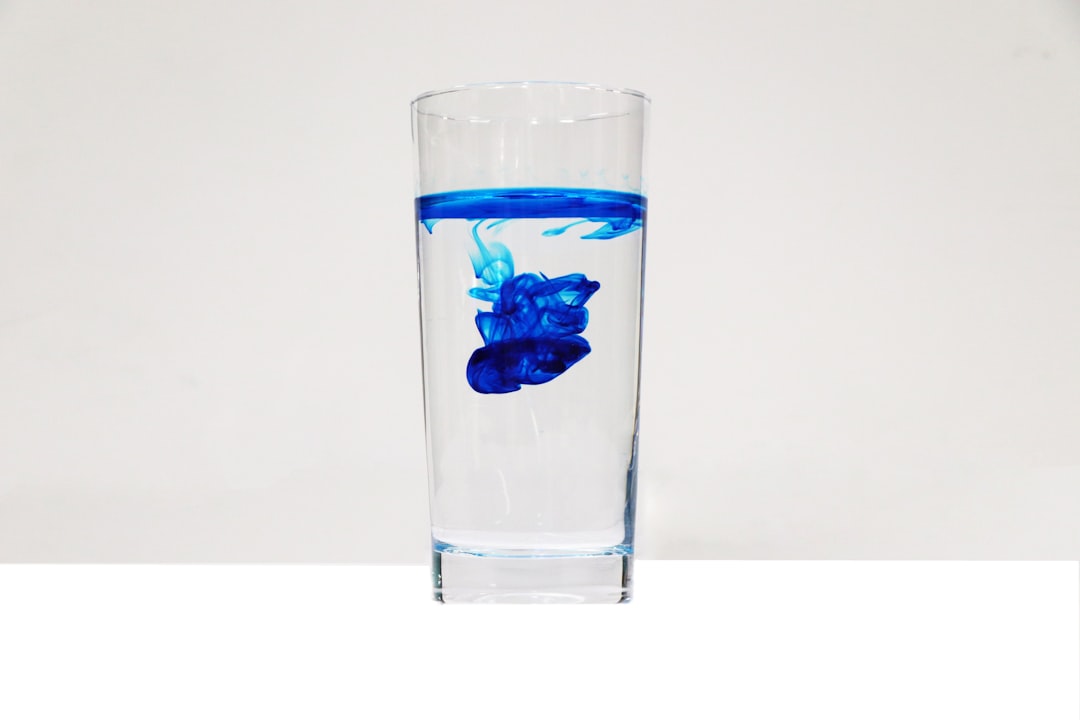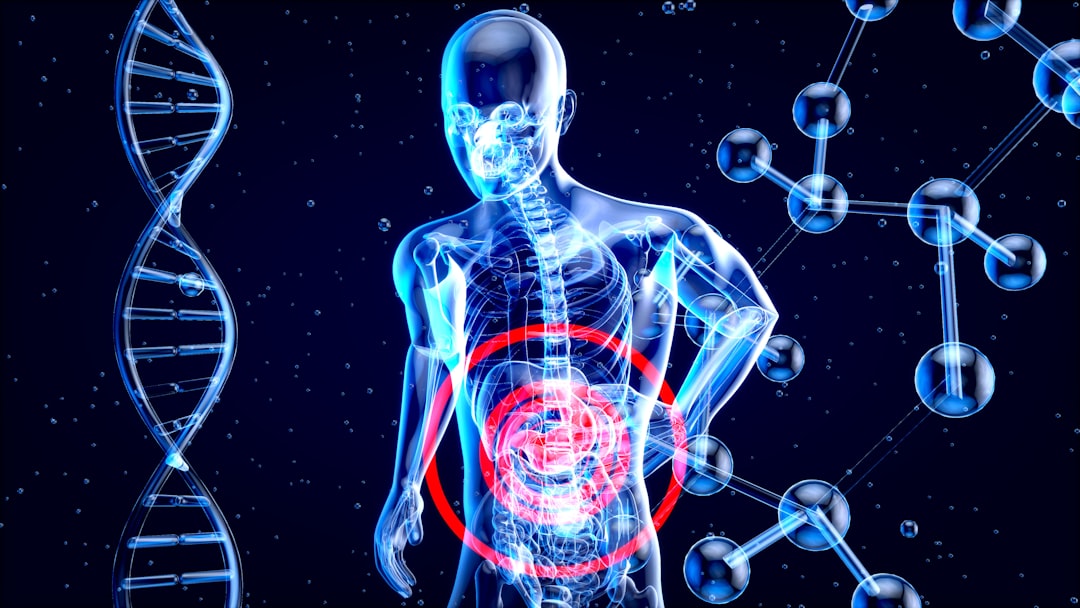What is it about?
The microwave-assisted synthesis approach was used to synthesize Eu(OH)3 and Co–Eu(OH)3 nanorods. Various techniques were used to investigate the structural, optical, and morphological features of the Eu(OH)3 and Co–Eu(OH)3 NRs. Both Eu(OH)3 and Co–Eu(OH)3 NRs were found to be hexagonal with crystallite sizes ranging from 21 to 35 nm. FT-IR and Raman spectra confirmed the formation of Eu(OH)3 and Co–Eu(OH)3. Rod-shaped Eu(OH)3 and Co–Eu(OH)3 with average lengths and diameters ranging from 27 to 50 nm and 8 to 12 nm, respectively, were confirmed by TEM. The addition of Co was found to increase the particle size. Furthermore, with increased Co doping, the band gap energies of Co–Eu(OH)3 NRs were lowered (3.80–2.49 eV) in comparison to Eu(OH)3, and the PL intensities with Co doping were quenched, suggesting the lessening of electron/hole recombination.
Featured Image

Photo by infoxicated on Unsplash
Why is it important?
The effect of these altered properties of Eu(OH)3 and Co–Eu(OH)3 was observed through the photocatalytic degradation of brilliant green dye (BG) and photoelectrochemical activity. In the photocatalytic degradation of BG, 5% Co–Eu(OH)3 had the highest response. However, photoelectrochemical experiments suggested that 10% Co–Eu(OH)3 NRs showed improved activity when exposed to visible light. As a result, Co–Eu(OH)3 NRs have the potential to be a promising visible-light active material for photocatalysis.
Perspectives
The microwave-assisted synthesis approach was used to synthesize Eu(OH)3 and Co–Eu(OH)3 nanorods. Various techniques were used to investigate the structural, optical, and morphological features of the Eu(OH)3 and Co–Eu(OH)3 NRs. Both Eu(OH)3 and Co–Eu(OH)3 NRs were found to be hexagonal with crystallite sizes ranging from 21 to 35 nm. FT-IR and Raman spectra confirmed the formation of Eu(OH)3 and Co–Eu(OH)3. Rod-shaped Eu(OH)3 and Co–Eu(OH)3 with average lengths and diameters ranging from 27 to 50 nm and 8 to 12 nm, respectively, were confirmed by TEM. The addition of Co was found to increase the particle size. Furthermore, with increased Co doping, the band gap energies of Co–Eu(OH)3 NRs were lowered (3.80–2.49 eV) in comparison to Eu(OH)3, and the PL intensities with Co doping were quenched, suggesting the lessening of electron/hole recombination. The effect of these altered properties of Eu(OH)3 and Co–Eu(OH)3 was observed through the photocatalytic degradation of brilliant green dye (BG) and photoelectrochemical activity. In the photocatalytic degradation of BG, 5% Co–Eu(OH)3 had the highest response. However, photoelectrochemical experiments suggested that 10% Co–Eu(OH)3 NRs showed improved activity when exposed to visible light. As a result, Co–Eu(OH)3 NRs have the potential to be a promising visible-light active material for photocatalysis.
Professor Mohammad Mansoob Khan
Universiti Brunei Darussalam
Read the Original
This page is a summary of: Impact of Co-Doping on the Visible Light-Driven Photocatalytic and Photoelectrochemical Activities of Eu(OH)3, ACS Omega, March 2024, American Chemical Society (ACS),
DOI: 10.1021/acsomega.3c10416.
You can read the full text:
Resources
Impact of Co-Doping on the Visible Light-Driven Photocatalytic and Photoelectrochemical Activities of Eu(OH)3
The microwave-assisted synthesis approach was used to synthesize Eu(OH)3 and Co–Eu(OH)3 nanorods. Various techniques were used to investigate the structural, optical, and morphological features of the Eu(OH)3 and Co–Eu(OH)3 NRs. Both Eu(OH)3 and Co–Eu(OH)3 NRs were found to be hexagonal with crystallite sizes ranging from 21 to 35 nm. FT-IR and Raman spectra confirmed the formation of Eu(OH)3 and Co–Eu(OH)3. Rod-shaped Eu(OH)3 and Co–Eu(OH)3 with average lengths and diameters ranging from 27 to 50 nm and 8 to 12 nm, respectively, were confirmed by TEM. The addition of Co was found to increase the particle size. Furthermore, with increased Co doping, the band gap energies of Co–Eu(OH)3 NRs were lowered (3.80–2.49 eV) in comparison to Eu(OH)3, and the PL intensities with Co doping were quenched, suggesting the lessening of electron/hole recombination. The effect of these altered properties of Eu(OH)3 and Co–Eu(OH)3 was observed through the photocatalytic degradation of brilliant green dye (BG) and photoelectrochemical activity. In the photocatalytic degradation of BG, 5% Co–Eu(OH)3 had the highest response. However, photoelectrochemical experiments suggested that 10% Co–Eu(OH)3 NRs showed improved activity when exposed to visible light. As a result, Co–Eu(OH)3 NRs have the potential to be a promising visible-light active material for photocatalysis.
Impact of Co-Doping on the Visible Light-Driven Photocatalytic and Photoelectrochemical Activities of Eu(OH)3
The microwave-assisted synthesis approach was used to synthesize Eu(OH)3 and Co–Eu(OH)3 nanorods. Various techniques were used to investigate the structural, optical, and morphological features of the Eu(OH)3 and Co–Eu(OH)3 NRs. Both Eu(OH)3 and Co–Eu(OH)3 NRs were found to be hexagonal with crystallite sizes ranging from 21 to 35 nm. FT-IR and Raman spectra confirmed the formation of Eu(OH)3 and Co–Eu(OH)3. Rod-shaped Eu(OH)3 and Co–Eu(OH)3 with average lengths and diameters ranging from 27 to 50 nm and 8 to 12 nm, respectively, were confirmed by TEM. The addition of Co was found to increase the particle size. Furthermore, with increased Co doping, the band gap energies of Co–Eu(OH)3 NRs were lowered (3.80–2.49 eV) in comparison to Eu(OH)3, and the PL intensities with Co doping were quenched, suggesting the lessening of electron/hole recombination. The effect of these altered properties of Eu(OH)3 and Co–Eu(OH)3 was observed through the photocatalytic degradation of brilliant green dye (BG) and photoelectrochemical activity. In the photocatalytic degradation of BG, 5% Co–Eu(OH)3 had the highest response. However, photoelectrochemical experiments suggested that 10% Co–Eu(OH)3 NRs showed improved activity when exposed to visible light. As a result, Co–Eu(OH)3 NRs have the potential to be a promising visible-light active material for photocatalysis.
Contributors
The following have contributed to this page










